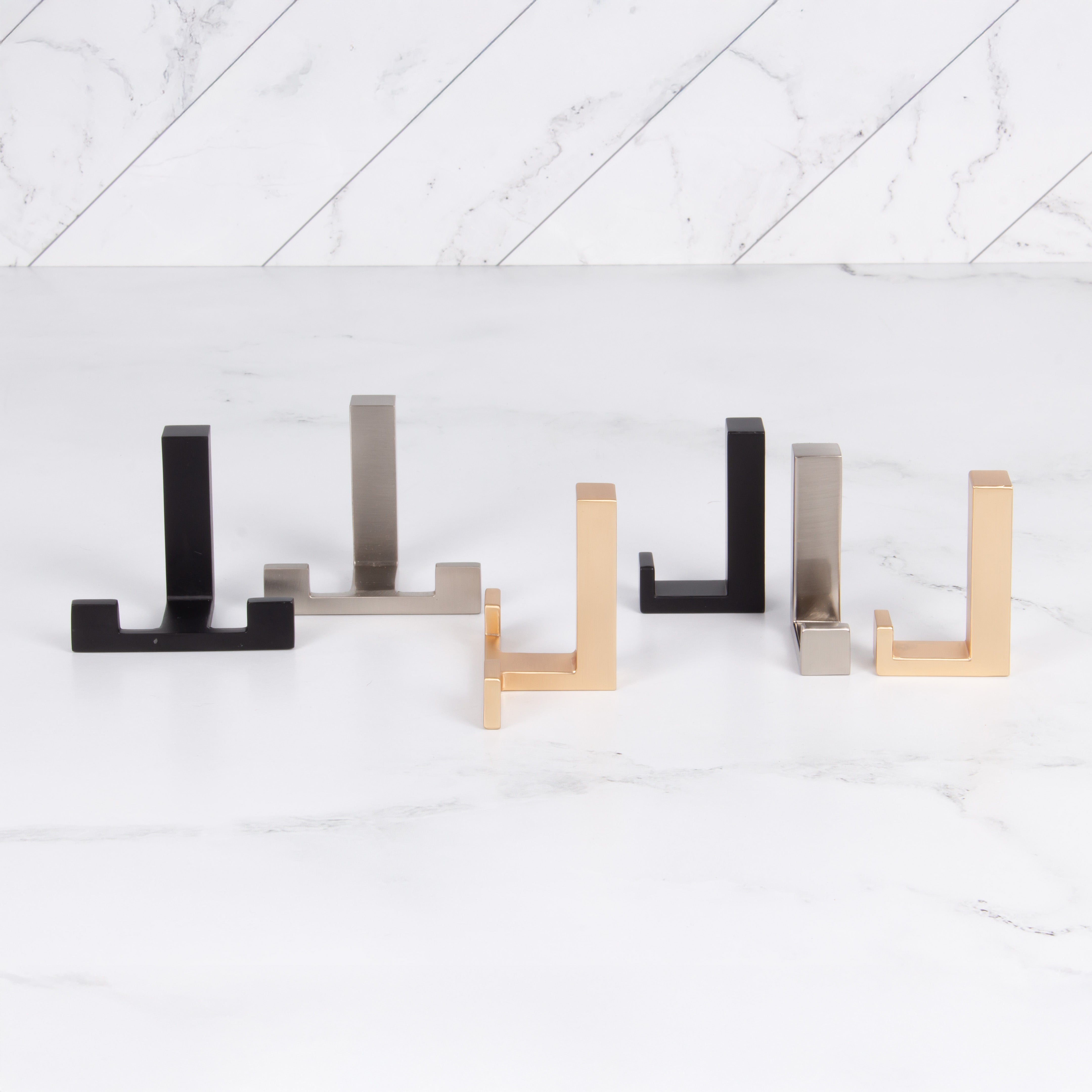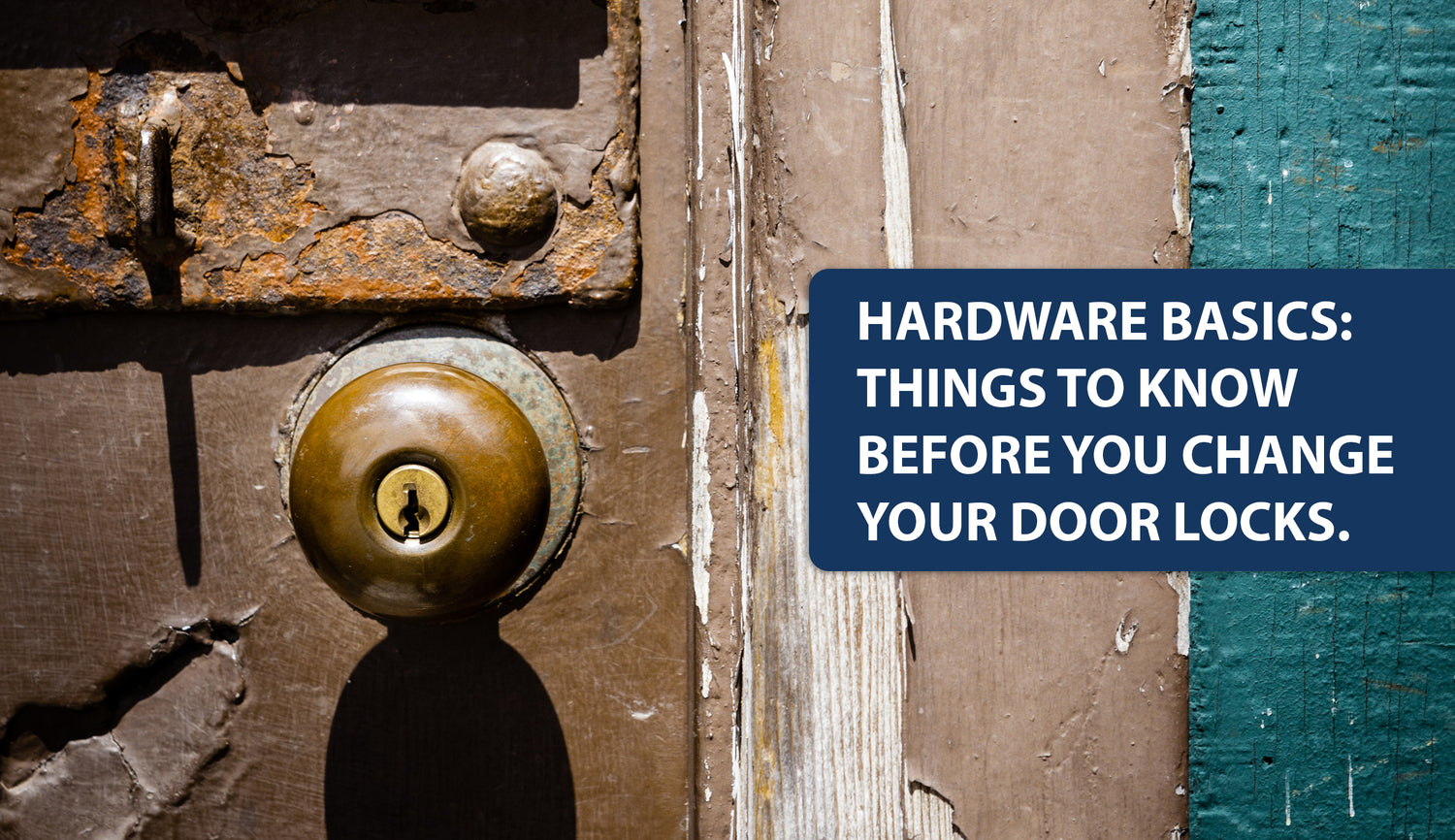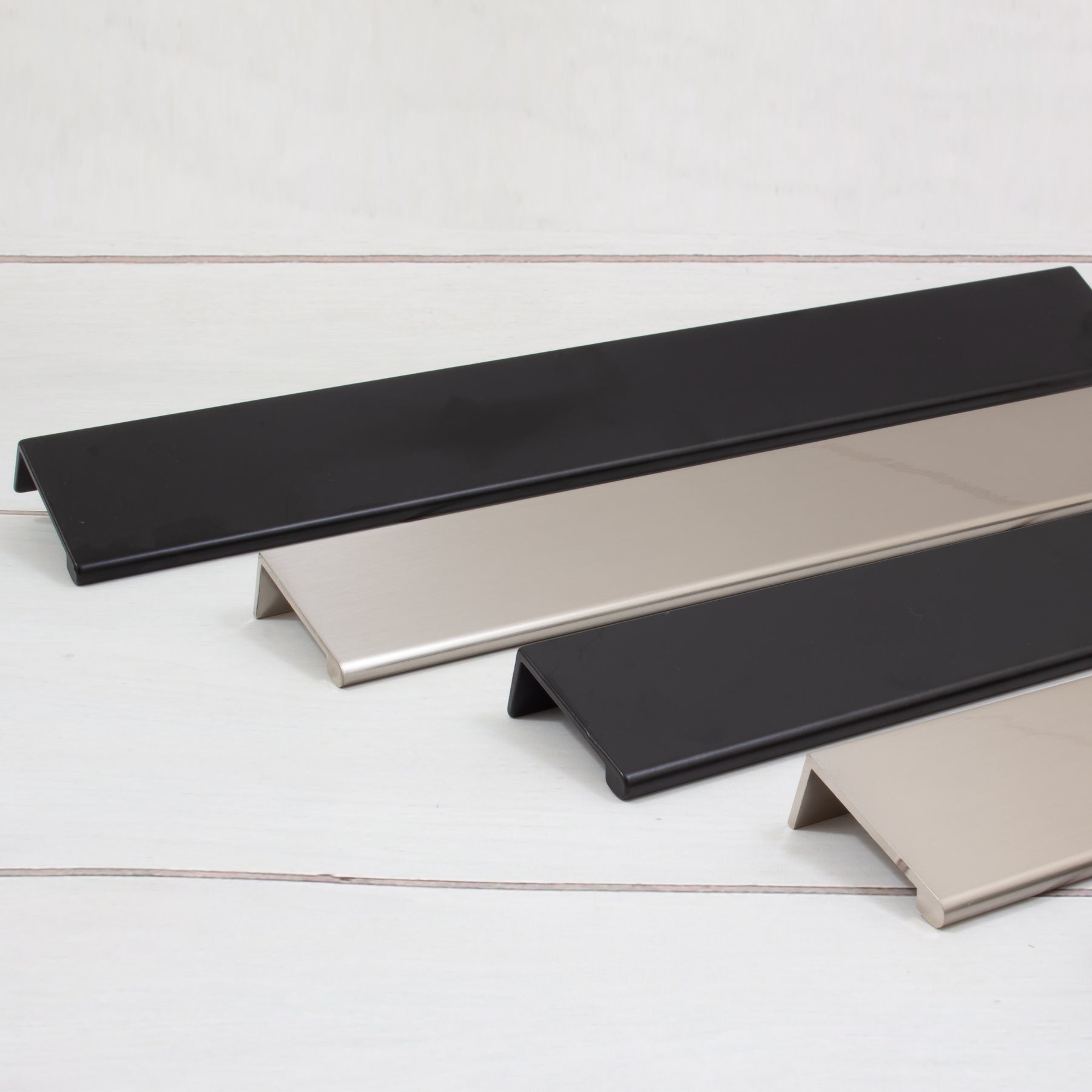Are you thinking about changing the locks on your home, but aren’t sure if you’re up for the job? Maybe you just bought a new house and want to be sure no one else has a key. Maybe the locks on your front door don’t match the lock on the interior doors. Maybe you’d prefer levers instead of knobs. Or, maybe you just want to refresh the look of your home. Whatever the reason, replacing your door locks can be a DIY-friendly project – as long as you keep a few things in mind!
First, take a look at your doors and figure out what locks will work with your doors. (Some doors in older homes may have a mortise-style lock, which will be more difficult to replace. If this is the case, you may want to either replace the door or contact a locksmith to change the lock.) Check the backset (the distance from the edge of the door to the center of the hole for the lock) and the hole prep to make sure they’ll work with your new locks. The most common backsets are 2-3/8” or 2-3/4”, and many door locks are designed to fit in a 2-1/8” bore hole.
Once you’ve done your homework and figured out what will fit your door, you can start looking at the various door lock options that are out there! Do you want a knob or a lever? Do you prefer contemporary or traditional styles? Do you want the locks to match the rest of your home’s hardware, or do you prefer the look of mixed metals?
Before you purchase your locks, make a list of the locks you’ll need so you know exactly what to bring home from the store! Make a note of the handing for the various doors in case the lock you’ve chosen is handed instead of reversible. (While most locks are reversible, some functions – like dummy levers and interior trim packs for handlesets – are left-hand or right-hand specific. Handing is determined from the outside of the door and depends on the hinges. If the hinges are on the right from the outside, the door is right-handed, and vice versa.)
If you’re replacing a keyed lock and want to use your existing keys, be sure you choose a lock with the same type of keyway as your original locks. Then, you can have a locksmith rekey your new lock to match your key before you put the lock on the door.
Finally, collect the tools you’ll need for the job. If you’re replacing an existing lock, you’ll probably just need a Phillips screwdriver.

If you’re starting from scratch, you’ll also want a hole saw (most likely 2-1/8” in size), a chisel for the latch face, a drill with a spade bit for the latch, a tape measure, and the installation template that comes with your lock. Before you drill a hole in your doors, read the instructions carefully. This way, you can be sure that your lock doesn’t require anything else for the installation! (If you plan to install several locks on new doors, you may want to invest in a door lock installation kit. These kits usually include the hole saws and jigs required for the most common door locks and can make the installation process a bit smoother!)
With these tips, changing your locks can be a breeze!






15 comments
Clare Martin
I just moved to a new house in Halethorpe a few days ago, and as an added safety measure, I plan to get the locks around the house replaced soon in case the previous owner has copies of the keys. I appreciate you letting us know that we should figure out what locks work with our doors first before getting them replaced by checking the backset and the hole prep to help us narrow down our options. I’ll keep this in mind while I look for a service provider in Halethorpe to help me get the new locks I need at home. https://www.baltdoor.com/door-locks-halethorpe
Eve Mitchell
Thanks for mentioning that you need to figure out what locks will fit your door. I just bought a new house and I would like to change the locks before I move in. It’d be nice to call a locksmith who can advise me on what locks to buy. https://www.prolocklocksmithllc.com/residential-locksmith
Eli Richardson
It’s interesting to know how to change a lock and choose the right one for our door. Recently, my sister said that she’s been worried about her house’s security, so since she doesn’t have any locksmith-related tools nor the patience for the job, I’ll suggest she hires a professional instead. Thank you for the tips on knowing if our door’s handing is handed or reversible. https://www.prolocklocksmithllc.com/residential-locksmith
Elina Brooks
I’m thinking of changing my locks at home soon since I accidentally lost my keys yesterday and I’m worried that they might have fallen into the wrong hands. Thank you for letting us know that we should look at our door first before deciding on the lock since there are certain door types that require specific locking mechanisms. I’ll keep this in mind while I look for a locksmith to hire soon. https://dupagesecuritysolutions.com/contact/wooddale
Olivia Smart
Thank you for pointing out that you can get a locksmith to rekey your new locks to match your old keys. I’ve been wondering what we can do that wouldn’t require us to get new keys but would allow us to update the locks around our home. I’ll be sure to talk to a locksmith once we have everything picked out. https://www.manhattankslocksmith.com/residential_locksmith.html
Leave a comment
All comments are moderated before being published.
This site is protected by hCaptcha and the hCaptcha Privacy Policy and Terms of Service apply.